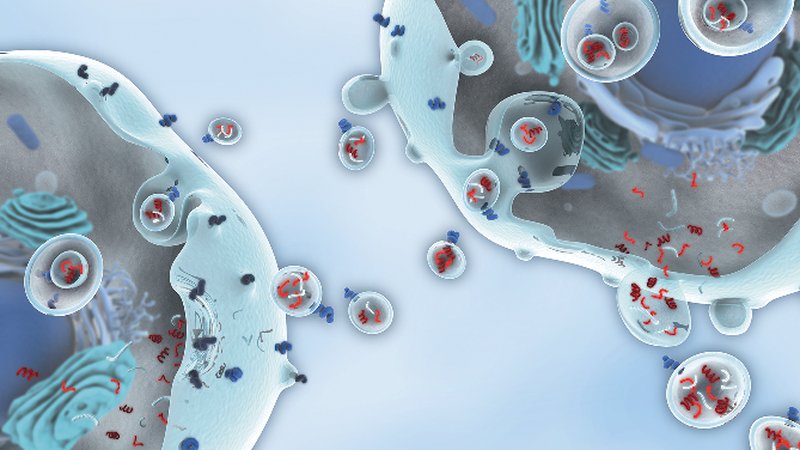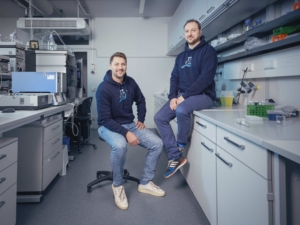
Exosomes: Extracellular and extraordinary
Disregarded for decades, extracellular vesicles are now understood to be a key element in communication between cells. Discoveries around the nano-sized bubbles are revolutionising not only the field of diagnostics. With their ability to mimic stem cells, EVs could also help open the doors to novel therapeutic concepts.
People are now slowly beginning to recognize that we’re not talking about artefacts or accidental debris in cells, but instead a whole new system of cell communication that influences regenerative processes, inflammation and even tumourigenesis in the human body, says Bernd Giebel, a pioneering German EV researcher and stem-cell biologist at Essen University Clinic. In 2008, only around 50 papers were published on the topic. Eight years later, that number has exploded to well over 2,000 annually. In August, the microbubbles even earned their own dedicated Gordon Conference. The field is still in its infancy, but we’ve seen fast development in the last few years, says Giebel.
The first suggestion that cells shed microvesicles to the extracellular space not by accident but as a result of a specific biological process came in 1977, and observed in electron microscopy six years later. But for a long time, little was known about their function. Only around twenty years later could researchers prove that vesicles deriving from B-cells are able to stimulate immune reactions in T cells.
One of the turning points for the field in terms of attention was a paper published in 2006 in Leukemia by Mariusz Ratajzak, who was still at the University of Louisville in the US at the time. Although it took him three years to convince editors and reviewers, the well-known stem-cell researcher finally delivered a key message to the scientific community: EVs from embryonic stem cells transfer RNA and protein to blood precursor cells, and change their developmental fate. Since then, extracellular vesicles have been viewed as mediators of information, and have been identified as influential factors in the behaviour and even developmental fate of recipient cells. In fact, they appear to be involved in almost every physiological and pathological process, including neurodegeneration, cancer and inflammation.
Read the full background on exosomes in our print magazine!


 SLAS - Alexandra Csuport Photography
SLAS - Alexandra Csuport Photography Phabioc GmbH
Phabioc GmbH